Planting walnut seedlings in autumn and spring: rules of care and cultivation
Many copies were broken and the benefits of such a valuable nutritious product as walnuts were talked about. By the way, with its help, as a source of healthy nutrition, it is possible to replenish the supply of vitamins and microelements all year round, and what is especially important - it cannot be compensated with anything. That is why it is worth considering that this absolutely wonderful culture grows in your summer cottage, especially since the prices for it in the store bite.
This article tells about the best way to plant walnut seedlings in spring or autumn, about proper care in the open field and thoughtful preparation for winter.
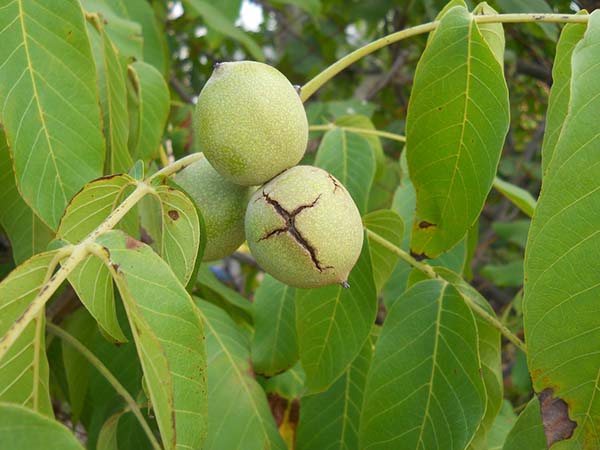
Content
When to plant walnuts: in spring or autumn
The optimal time for planting a walnut directly depends on where you live, that is, on the climatic zone.
So, in the middle lane (Moscow region) and other northern regions the best time to plant a walnut is Spring... Moreover, the planting of the seedling should be carried out before the buds swell, when all the snow has melted, and the weather becomes stably positive, that is, around the month of April. It is not recommended to plant in autumn, as a tree in such climatic conditions can freeze out in winter.
On South (in the Krasnodar Territory, Ukraine) walnuts are planted in the fall during leaf fall, that is, it is about October - November.
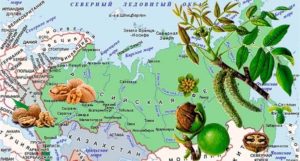
Important! First of all, when planting walnut seedlings, it is necessary to focus on weather conditions, namely, on the temperature, which should be positive (at least during the day), and the earth is not frozen (in autumn), or completely thawed (in spring).
How to plant a walnut seedling
In many ways, the growth and development of a nut is determined by the correct choice of a seedling and its preparation for planting. You should also take very seriously the planting site and the very method of improved planting of a young tree.
Important! As a rule, recently walnut growers have mainly begun to use the technology of planting and growing walnuts according to the Kiktenko method, in part it is this technology (with some additions from other sources and the experience of gardeners) that will be described in this manual.
Selection and preparation (pruning) of a seedling
When choosing a nut seedling, many are wondering which one is better to choose - one year old or two year old. Of course, it is preferable to plant a two-year-old seedling, because it will require less maintenance than an annual one, but it will also cost more.
What else should you pay attention to when buying a walnut seedling:
- the seedling should have a single leading trunk (in no case two), on which there is no mechanical damage;
- the vaccination site should grow well together;
- there should be no deformation of the roots (they should not be twisted).
Important! It is advisable to plant a lignified seedling.
It is also very important to pay attention to the height of the seedling. Annuals, as a rule, have a height of about 30-40 cm, they do not need to be cut off when planting. Another thing is two-year-old seedlings, the height of which for 2 years of life can reach 1.5-2 meters. Such a seedling must be cut off before planting to a height of about 50-80 cm.
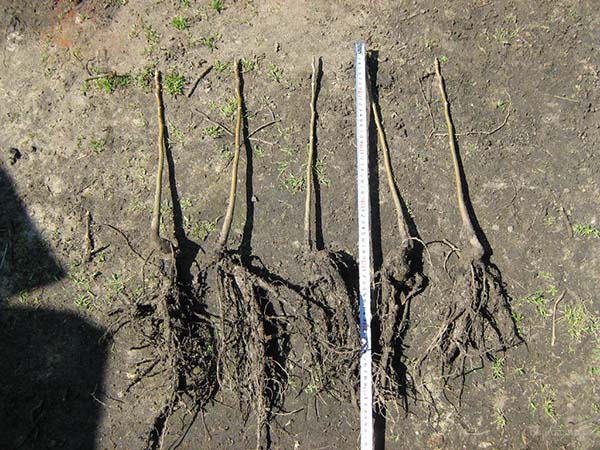
Note! The shortening of the aboveground part is done in order to balance it with the underground part of the plant. In other words, if you do not prune, then the root system simply will not be able to normally provide food for the entire plant, which as a result will constantly wither away and eventually dry up.
Video: description of the "Ideal" walnut variety
Place on the site and soil
The most suitable soil for growing walnuts is carbonate (rich in black soil). Although, of course, this is not necessary, but it is in such a soil that it grows most comfortably. However, it will grow well on wet loams.
As for the optimal planting place in the garden, it is better to plant walnuts in a sunny area, and the groundwater should not be located very high (no more than 2 meters). If the water table is close, the walnut tree will not grow well even if you plant it on a mound. This is due to the fact that the root system of the tree grows very powerful and spreading, which means that it will quickly reach the water level, and the roots will simply begin to rot.
Important! In no case can not be planted Walnut near the house... Its root system is so strong that it can destroy almost any foundation (even reinforced concrete). It is better to plant it somewhere at the end of the garden, and be sure to farther from other fruit (fruit) trees, since the nut draws all the nutrition from the soil. It is also worth considering that when it grows, then its branches will shade a fairly large area of your or a neighboring site.
By the way! Hazelnuts, rose hips, currants, raspberries, viburnum, quince and bird cherry can grow quite normally next to a walnut tree. But very badly they will coexist with a nut - dogwood and plum.
If you want to plant several trees at once (and this is exactly what you need to do), then you need to maintain a distance between the seedlings at least 5 meters, although on an industrial scale they are often planted according to the 10 by 14 meters scheme. The distance between seedlings directly depends on the cultivated variety.
Advice! For the nuts to be tasty (oily and sweet), they absolutely need cross-pollination, which requires at least 2, or even better - 3-4 trees.
Landing pit
It is very important to properly prepare the planting hole for planting a nut seedling. The optimal size of the hole is about 60 by 60 centimeters, but more is possible (depending on the size of the roots). In this case, all the land that remains after digging a hole must be used to create a hole around (a near-trunk circle with high sides).
As a nutrient mixture for better survival and rapid development of the seedling to the bottom of the landing pit preferably sprinkle about 1 kg of ammophos (52% phosphorus, 12% nitrogen), wherein without mixing, just a bunch.

Why is phosphorus needed? Phosphorus has a positive effect on winter hardiness, the laying of fruit buds, general immunity and the susceptibility of a tree to diseases.
Then on top of ammophos you need to pour at least 20 centimeters of soil, but not what remained after the excavation, but only from top fertile soil... To activate the activity of fungi of symbionts, you need to add 5-8 kg of excellent humus.
Interesting! The root system of the walnut differs from other fruit trees, because it has symbiont mushrooms on its roots, which, due to their mycorrhiza, extract all nutrients and moisture from the soil. Like any mushrooms, they are very fond of organic matter (humus, manure).
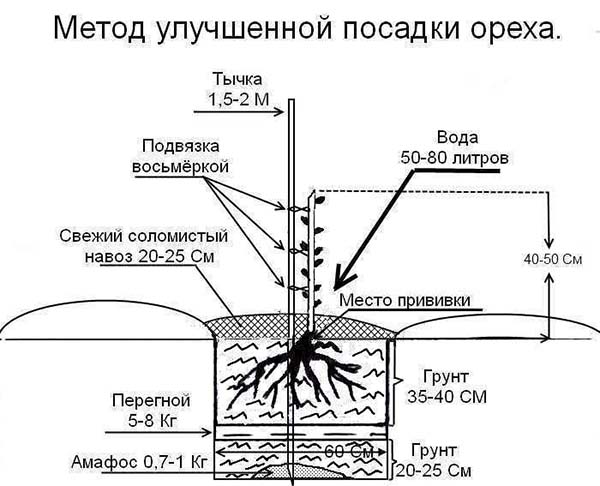
Direct planting of a seedling
Step-by-step instructions for planting a walnut seedling in open ground (according to Kiktenko):
- Choose the best place on the site.
- Prepare the planting pit and fill it correctly with fertile soil.
- Place the seedling in the hole so that the grafting site is at soil level.
- Cover with earth from the top layer.
- Next, you need to carefully take the seedling with your hands and move it a little in different directions (about 1-1.5 centimeters) so that its roots straighten out and the soil fills the space between them (for better contact with the ground).
- Now you need to very carefully compact the soil, trampled underfoot so that the earth settles as best as possible and squeezes the root system of the seedling.
- Then fill the entire hole up to the top (at least 20 cm, and better - 25 cm) with fresh manure with straw, the so-called straw manure (clean manure should be 20%, straw - 80%). This will be a kind of mulching layer that will retain moisture, preventing the roots from overheating in hot summer, and will also play the role of an excellent winter shelter.
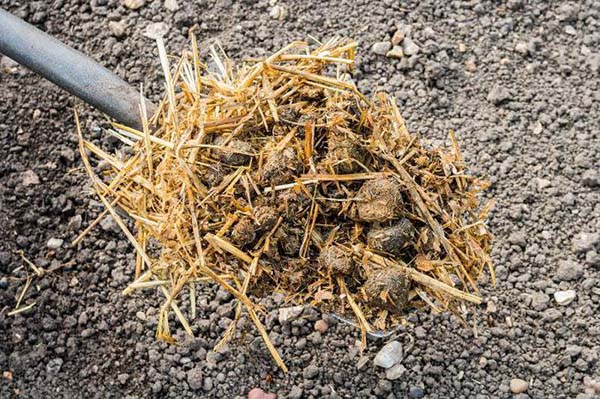
- At the end, it is necessary to carry out abundant watering (60-80 liters of water), which will also have a positive effect on the contact of the roots with the soil, which means it will affect the better survival of the seedling.
- And after all the moisture has been absorbed, it is necessary to tie the seedling to the peg with an eight (Tip: it is better to just drive the peg in first, and tie it up after a few days, when the soil has completely settled). Moreover, the peg itself must be installed on the side from which the wind most often blows.
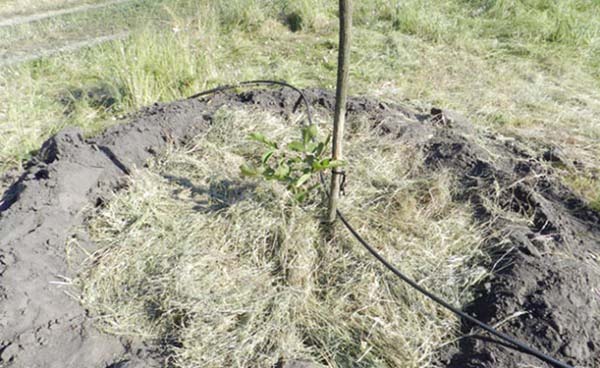
Video: planting a walnut - a master class
But you can plant it in more standard ways, which are described in the following videos.
Video: how to plant a walnut seedling in the fall in different ways
Outdoor Walnut Care
A reliable way to get an excellent harvest of nuts is correct and thoughtful tree care in the open field.
Watering
It is the correct watering of the walnut that is the basis of tree care.So, during the summer season (especially if the summer is dry and hot, there is no rain), a young nut will need only about 10-14 waterings (almost every week), and about 2-3 buckets of water (25-35 liters) should be poured at once ... In the future, an already mature tree should be watered more abundantly (60-80 liters), but not so often (2-3 times a month is enough).
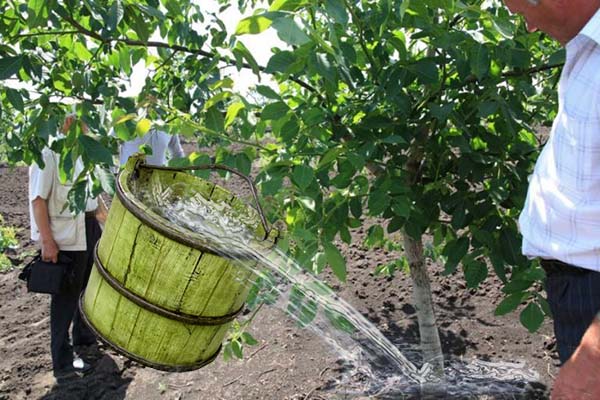
Top dressing
Important! Since you have already applied a significant amount of fertilizer during planting, you do not need to additionally feed the walnut tree until about 8-10 years.
The further scheme for feeding the walnut is quite simple:
- in the spring - nitrogen fertilizers;
- in the fall - potash and phosphorus.
The nut is very fond of organic fertilizers, so it is advisable to feed it with humus, compost and ash - 5-6 kg per 1 sq. meter of the trunk circle. From mineral fertilizers, you can use ammonium nitrate, urea (urea) (all nitrogen), potassium humate, potassium sulfate, potassium salt (all potassium), superphosphate, ammophos (all phosphoric).
Note! If you already have sufficiently fertile soil (not sandy), then you should be very careful about feeding, because the nut grows very quickly anyway.
Preparing for winter
The measures for preparing young walnut seedlings for winter include the following manipulations:
- whitewashing of tree trunks (it is better to wrap 1-year-olds with corrugated paper or a similar white covering material, and in the spring it is necessary to remove, 2-year-olds and older - it is better to whitewash);
Note! How to whitewash fruit trees correctly is described in detail in this article.
- moisture charge to increase frost resistance (pour 60-80 liters of water under the seedling).
Pruning and shaping
As a rule, it is believed that a walnut tree independently regulates its crown, which means that it does not require special shaping. That is, it is necessary to carry out only sanitary pruning of dried up branches (and preferably in the summer) so that they do not interfere with the living.
However, if you want to get the most fruitful tree, then it should be properly formed, especially in the early period. You can see more details about this procedure in the next video.
Video: pruning and shaping the crown of a walnut tree: scheme and practice
When to harvest and how to store it
Determining that the walnuts are ripe and it's time to harvest is quite simple - their green shell should begin to crack.

After you collect the nuts in the green peel, you will first need to separate it (for this it is better to let them lie down for a week in the basement), then rinse the fruits in water and dry, only after these manipulations can the nuts be stored.
Important! More detailed information on the ripening time, the rules for preparing for laying for storage (on how to properly dry the nuts) is given in this separate article.
Now the difficult task of planting a walnut in your garden in spring or autumn will not confuse you. You just need to take into account how to choose the right seedlings and prepare them for planting, in order to then carry out all the necessary measures for caring for young trees.
Video: do you need a walnut in the country - the pros and cons of planting on the site


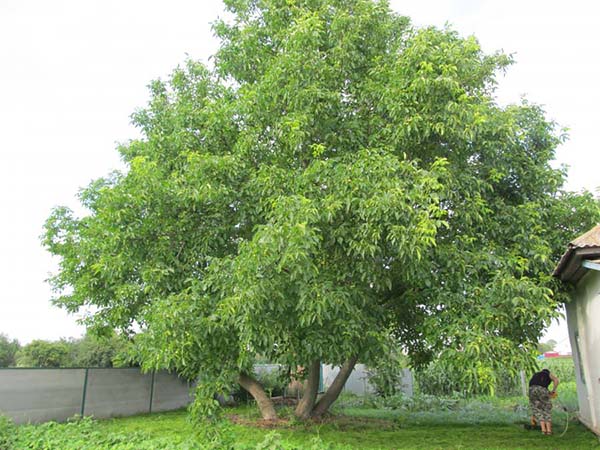
If you live in the Southern regions, don't be afraid to plant walnuts in the spring. Walnut is a thermophilic culture, and the best planting time is when the soil at the depth of the roots of the seedling has warmed up above + 10C (this is biological zero for walnut). Plus, shade the tree and water it regularly. There is even a copyright certificate for this method: see the blog bokoplidni kharkiv nuts